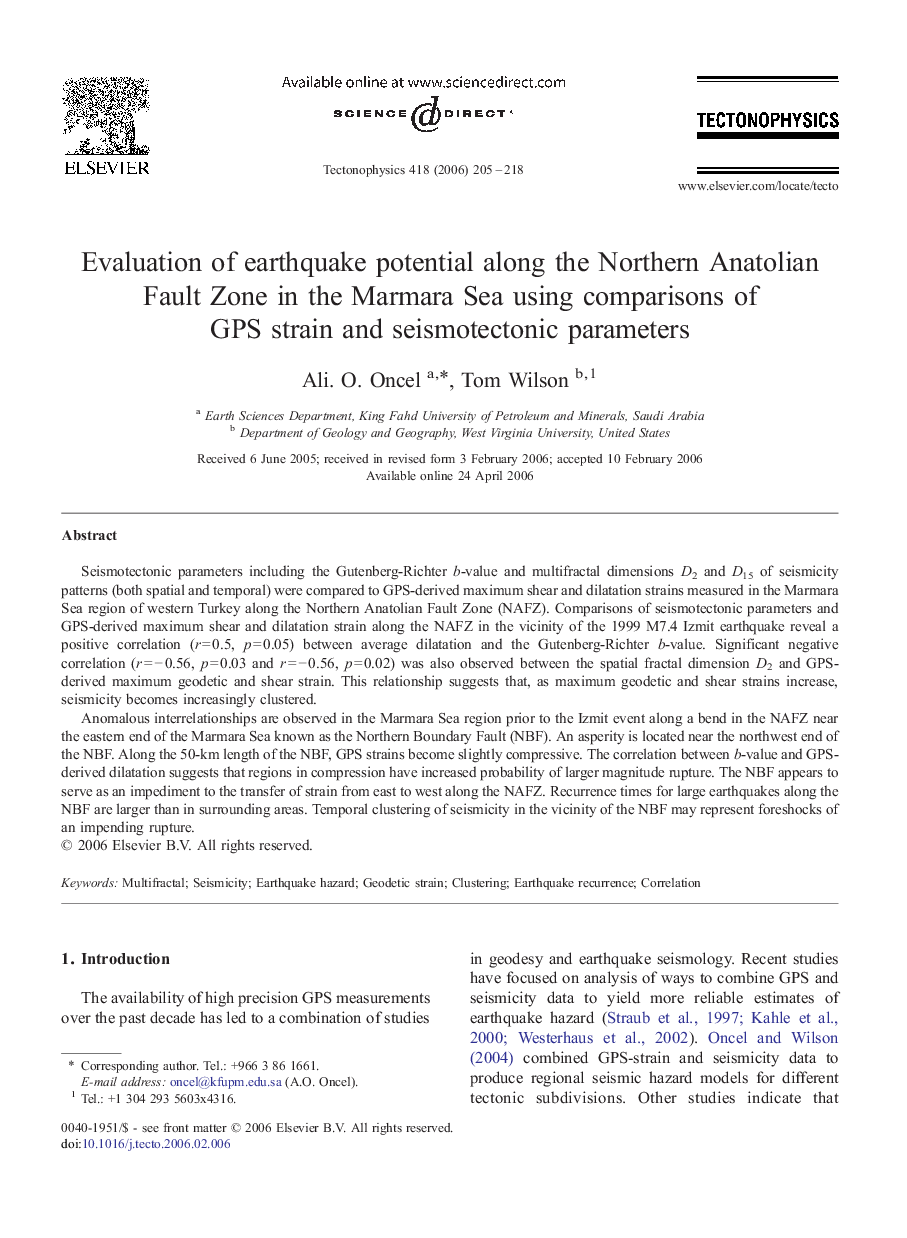| Article ID | Journal | Published Year | Pages | File Type |
|---|---|---|---|---|
| 4695170 | Tectonophysics | 2006 | 14 Pages |
Seismotectonic parameters including the Gutenberg-Richter b-value and multifractal dimensions D2 and D15 of seismicity patterns (both spatial and temporal) were compared to GPS-derived maximum shear and dilatation strains measured in the Marmara Sea region of western Turkey along the Northern Anatolian Fault Zone (NAFZ). Comparisons of seismotectonic parameters and GPS-derived maximum shear and dilatation strain along the NAFZ in the vicinity of the 1999 M7.4 Izmit earthquake reveal a positive correlation (r = 0.5, p = 0.05) between average dilatation and the Gutenberg-Richter b-value. Significant negative correlation (r = − 0.56, p = 0.03 and r = − 0.56, p = 0.02) was also observed between the spatial fractal dimension D2 and GPS-derived maximum geodetic and shear strain. This relationship suggests that, as maximum geodetic and shear strains increase, seismicity becomes increasingly clustered.Anomalous interrelationships are observed in the Marmara Sea region prior to the Izmit event along a bend in the NAFZ near the eastern end of the Marmara Sea known as the Northern Boundary Fault (NBF). An asperity is located near the northwest end of the NBF. Along the 50-km length of the NBF, GPS strains become slightly compressive. The correlation between b-value and GPS-derived dilatation suggests that regions in compression have increased probability of larger magnitude rupture. The NBF appears to serve as an impediment to the transfer of strain from east to west along the NAFZ. Recurrence times for large earthquakes along the NBF are larger than in surrounding areas. Temporal clustering of seismicity in the vicinity of the NBF may represent foreshocks of an impending rupture.
